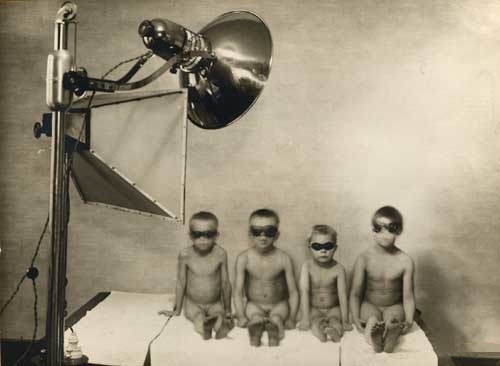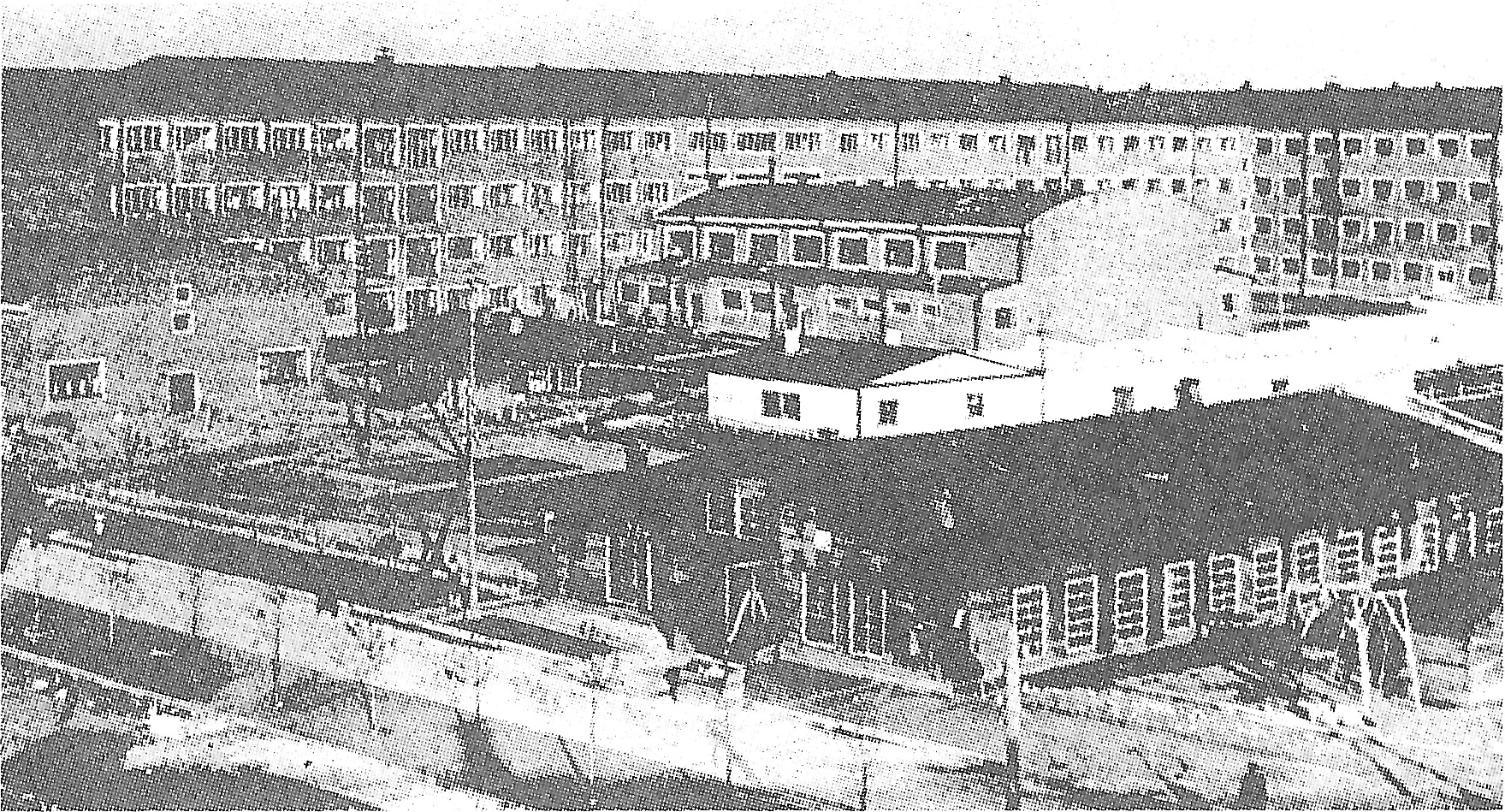|
Igor Ursov
Igor G. Ursov (January 20, 1927 – June 20, 2002) ( Russian: ''Игорь'' ''Урсов'' ) was a Soviet and Russian tuberculosis specialist and organizer of public health who achieved tuberculosis control breakthroughs in Russia. Biography Igor Grigorievich Ursov was born in 1927 to his parents Grigory Ivanovich Ursov and Natalia Petrovna Drobot. His father originated from a large Cossack family from southern Krasnodar, and had a degree as a glass production engineer. His mother also came from a large family; she worked with her husband on new glass plants. After Igor Ursov graduated from a special Air Force high school with a gold medal, he unsuccessfully applied to the Moscow Aviation Institute. Then, he was accepted to Moscow Power Engineering Institute's Department of Radio. After one and a half years of study, he decided to work in the medical field. Therefore, he applied to Kuban Medical Institute and passed entrance exams. There, he studied with Sergei Grigorievich Dro ... [...More Info...] [...Related Items...] OR: [Wikipedia] [Google] [Baidu] |
Tuberculosis Control
Tuberculosis management describes the techniques and procedures utilized for treating tuberculosis (TB). The medical standard for active TB is a short course treatment involving a combination of isoniazid, rifampicin (also known as Rifampin), pyrazinamide, and ethambutol for the first two months. During this initial period, Isoniazid is taken alongside pyridoxal phosphate to obviate peripheral neuropathy. Isoniazid is then taken coincident with rifampicin for the remaining four months of treatment. A patient is considered free of all living TB bacteria after six months. Latent tuberculosis or latent tuberculosis infection (LTBI) is treated with three to nine months of isoniazid alone. This long-term treatment often risks the development of hepatotoxicity. A combination of isoniazid plus rifampicin for a period of three to four months is shown to be an equally effective method for treating LTBI, while mitigating risks to hepatotoxicity. Treatment of LTBI is essential in preventin ... [...More Info...] [...Related Items...] OR: [Wikipedia] [Google] [Baidu] |
Tuberculosis Elimination
Tuberculosis elimination is the effort to reduce the number of tuberculosis (TB) cases to less than one per 1 million population, contrasted with the effort to completely eradicate infection in humans worldwide. The goal of tuberculosis elimination is hampered by the lack of rapid testing, short and effective treatment courses, and completely effective vaccine. The WHO as well as the Stop TB Partnership aim for the full elimination of TB by 2050—requiring a 1000-fold reduction in tuberculosis incidence. As of 2017, tuberculosis has not been eliminated from any country. Feasibility Tuberculosis has been a curable illness since the 1940s when the first drugs became available, although multidrug-resistant and extensively drug-resistant TB present an increasing challenge. According to a 2017 article in ''International Journal of Infectious Diseases'', tuberculosis eradication is possible if enough technology, funding, and political will were available, but the characteristics of ... [...More Info...] [...Related Items...] OR: [Wikipedia] [Google] [Baidu] |
Doctor Of Medicine
Doctor of Medicine (abbreviated M.D., from the Latin language, Latin ''Medicinae Doctor'') is a medical degree, the meaning of which varies between different jurisdictions. In the United States, and some other countries, the M.D. denotes a professional degree. This generally arose because many in 18th-century medical professions trained in Scotland, which used the M.D. degree nomenclature. In England, however, Bachelor of Medicine, Bachelor of Surgery was used and eventually in the 19th century became the standard in Scotland too. Thus, in the United Kingdom, Republic of Ireland, Ireland and other countries, the M.D. is a research doctorate, honorary degree, honorary doctorate or applied clinical degree restricted to those who already hold a professional degree (Bachelor's/Master's/Doctoral) in medicine. In those countries, the equivalent professional degree to the North American, and some others use of M.D., is still typically titled Bachelor of Medicine, Bachelor of Surgery (M.B ... [...More Info...] [...Related Items...] OR: [Wikipedia] [Google] [Baidu] |
Candidate Of Medicine
Candidate of Medicine ( la, candidatus medicinae (male), ''candidata medicinae'' (female), abbreviated cand. med.) is an academic degree awarded in Denmark, Iceland, and Norway following a six-year medical school education. Medical students in Germany, Austria and Switzerland carry this title during their medical studies before being awarded the degree of Dr. med. (Germany) or Dr. med. univ. (Austria) after defending a doctoral or diploma thesis before a jury. Defence of a thesis is compulsory at some medical faculties in Germany and can be prepared during or after medical studies, while in Austria it is compulsory to defend a thesis before completion of the medical curriculum. The degree can also be written as ''candidatus/candidata medicinæ'' ( Æ instead of AE). In Danish and Norwegian, the degree is, similar to other Latin degrees, generally not capitalized (i.e. it is written as ''candidatus/candidata medicinae'' and abbreviated ''cand.med.''). The abbreviation of the Latin ... [...More Info...] [...Related Items...] OR: [Wikipedia] [Google] [Baidu] |
Mongolia
Mongolia; Mongolian script: , , ; lit. "Mongol Nation" or "State of Mongolia" () is a landlocked country in East Asia, bordered by Russia to the north and China to the south. It covers an area of , with a population of just 3.3 million, making it the world's most sparsely populated sovereign nation. Mongolia is the world's largest landlocked country that does not border a closed sea, and much of its area is covered by grassy steppe, with mountains to the north and west and the Gobi Desert to the south. Ulaanbaatar, the capital and largest city, is home to roughly half of the country's population. The territory of modern-day Mongolia has been ruled by various nomadic empires, including the Xiongnu, the Xianbei, the Rouran, the First Turkic Khaganate, and others. In 1206, Genghis Khan founded the Mongol Empire, which became the largest contiguous land empire in history. His grandson Kublai Khan conquered China proper and established the Yuan dynasty. After the co ... [...More Info...] [...Related Items...] OR: [Wikipedia] [Google] [Baidu] |
Ulaanbaatar University
The National University of Mongolia ( mn, Монгол Улсын Их Сургууль, ''Mongol Ulsyn Ikh Surguuli'', abbreviated ''NUM'' or ''MUIS'') is a public university primarily located in Ulaanbaatar, Mongolia. Established in 1942, it is the oldest institution of higher learning in Mongolia, and originally named in honour of Khorloogiin Choibalsan as ''Choibalsan State University''. It hosts 5 main faculties in Ulaanbaatar, two branches (in Uliastai, Zavkhan Province and Erdenet, Orkhon Province), and three academies of national importance ( Mongol studies, economics, and sustainable development). After the establishment of the Mongolian People's Republic and its first modern secondary school in 1921, it was deemed necessary to establish an academic institution at a higher level. In 1942, the government established the National University of Mongolia as Mongolia's first university, with the first students graduating in 1946. During socialism, the university served as a ... [...More Info...] [...Related Items...] OR: [Wikipedia] [Google] [Baidu] |
Penza Oblast
Penza Oblast (russian: Пе́нзенская о́бласть, ''Penzenskaya oblast'') is a federal subject of Russia (an oblast). Its administrative center is the city of Penza. As of the 2010 Census, its population was 1,386,186. Geography The highest point of Penza Oblast is an unnamed hill of the Khvalynsk Mountains reaching above sea level located at the southeastern end, near Neverkino. Main rivers Penza Oblast has over 3000 rivers; the overall length is 15,458 km. The biggest rivers are: * Sura; *Moksha; *Khopyor. * Penza River gave its name to the city of Penza. Fauna There are 316 species of vertebrates within the region, including: *about 10 species of amphibians; *about 200 species of birds; *about 8 species of reptiles; *about 68 species of mammals (fox, rabbit, ferret, badger, squirrel). Seven existing species of mammals were already acclimatized on land: the American mink, muskrat, raccoon dog, wild boar, Siberian roe deer, red deer and Sika d ... [...More Info...] [...Related Items...] OR: [Wikipedia] [Google] [Baidu] |
Tamalinsky District
Tamalinsky District (russian: Тамали́нский райо́н) is an administrativeLaw #774-ZPO and municipalLaw #690-ZPO district (raion), one of the twenty-seven in Penza Oblast, Russia. It is located in the southwest of the oblast. The area of the district is . Its administrative center An administrative center is a seat of regional administration or local government, or a county town, or the place where the central administration of a commune A commune is an alternative term for an intentional community. Commune or comună or ... is the urban locality (a work settlement) of Tamala. Population: 16,503 ( 2010 Census); The population of Tamala accounts for 45.3% of the district's total population. Notable residents * Nikolai Krylov (1903–1972), Marshal of the Soviet Union * Aleksei Makushkin (born 1997 in Tamala), football player References Notes Sources * * External linksVideo presentation of selo Zudrilovo and Zubrilovka, former estate of princes Prozoro ... [...More Info...] [...Related Items...] OR: [Wikipedia] [Google] [Baidu] |
Moscow Power Engineering Institute
National Research University "Moscow Power Engineering Institute" (MPEI) is a public university based in Moscow, Russia. It offers training in the fields of Power Engineering, Electric Engineering, Radio Engineering, Electronics, Information Technologies and Management. History MPEI was founded in 1930. In 2011 it obtained the status of National Research University. Therefore, the new official name is National Research University “Moscow Power Engineering Institute”. In the world of emerging challenges, MPEI could actually be recognized as an ark that brings stability and quality in education. The well-settled high percentage of graduates that are successfully employed in their home countries has always been an advantage of MPEI study. The Russian core of MPEI student medium benefits from quality lecturers and professors, as well as the foreigners that take the Preliminary course of Russian language beforehand, or those who study in several English groups. About MPEI At MPE ... [...More Info...] [...Related Items...] OR: [Wikipedia] [Google] [Baidu] |
Moscow Aviation Institute
Moscow Aviation Institute (National Research University) (MAI; russian: Московский авиационный институт, МАИ) is one of the major engineering institutes in Moscow, Russia. Since its inception MAI has been spearheading advances in aerospace technology both within Russia and worldwide. The university laid emphasis on laboratory instruction in applied science and engineering, specific to the demands of aerospace industry. During World War II part of the university was evacuated to Almaty, Kazakhstan. Staffs and students continued to work on research and wartime production throughout the war. During the Post-War period, the university expanded and assimilated new technologies during the Jet age. Research conducted in the university contributed to heralding the space age. The university has to its merit more than 160,000 specialists, 250 chief designers in the Aerospace Industry. 50 Academicians of the Russian Academy of Sciences, 22 cosmonauts, 100 t ... [...More Info...] [...Related Items...] OR: [Wikipedia] [Google] [Baidu] |
Engineer
Engineers, as practitioners of engineering, are professionals who invent, design, analyze, build and test machines, complex systems, structures, gadgets and materials to fulfill functional objectives and requirements while considering the limitations imposed by practicality, regulation, safety and cost. "Science is knowledge based on our observed facts and tested truths arranged in an orderly system that can be validated and communicated to other people. Engineering is the creative application of scientific principles used to plan, build, direct, guide, manage, or work on systems to maintain and improve our daily lives." The word ''engineer'' (Latin ) is derived from the Latin words ("to contrive, devise") and ("cleverness"). The foundational qualifications of an engineer typically include a four-year bachelor's degree in an engineering discipline, or in some jurisdictions, a master's degree in an engineering discipline plus four to six years of peer-reviewed professiona ... [...More Info...] [...Related Items...] OR: [Wikipedia] [Google] [Baidu] |




